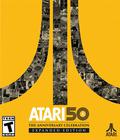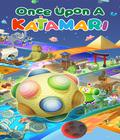Buy Grey Goo
Grey Goo seems like an odd name for a RTS game until you look up the term. Popularized in 1986, the term refers to an end-of-world scenario where nanomachines replicate at the expense of all matter on Earth. It's a good premise: fighting against your creations that are trying to kill you. The question is whether the veteran RTS team at Petroglyph has done justice to the premise with an enjoyable game.
The human race sent out a fleet of nanomachines to map the universe before searching for other intelligent life. The machines were decommissioned after completing the task, but instead of shutting off, the machines gained sentience and began to replicate. Meanwhile, a nomadic group of aliens known as the Beta are attacked by human drones as they perform experiments with a device that could transport them to their home planet. As the Beta and humans go to war against each other, the nanomachines come out of hiding to attack them both. What results is a three-way conflict, and all are unaware that a fourth group is slated to come into the picture.
The story plays out well. The characters are likeable, which is a good trait since the campaign demands that you play as all three factions, and the plot direction is plausible. None of the characters go out of character in a way that makes the writing weak, and the end of the game provides a good setup for a sequel, even though it's telegraphed way before the end. What pushes the story the most is the cinematics, which enhance the good writing with convincing performances and a look that screams quality. You'll especially enjoy the facial movements and lip sync during the mission briefings.
The campaign shows off some of the ways the designers have sought to simplify a genre that can seem intimidating to players. There's only one resource to gather, though there are a number of spots on each map to get it. That resource also replenishes at each spot, though the slow replenish rate is a reason to seek out new sources. Unlike most games, building construction takes a steady stream of resources instead of a lump sum, giving you the chance to construct what you need and wait for the resource to finish the job. There's also some automation in the unit building process, so you can produce an endless queue of soldiers while you concentrate on other things. Some more advanced tactics come into play, such as the use of elevation for a tactical advantage and forest cover to temporarily hide from the enemy's line of sight. It's familiar stuff for genre fans, but it's executed well.
To get some of the negatives out of the way already, the campaign is rather short. There are a total of 15 levels, with five for each faction. Even though the missions are meant to act as a tutorial for each group, it never feels like you have enough time to explore strategies with each group or play with all of the tools before you're shuttled off to the next faction. The difficulty curve is rather steep, especially for those who are jumping into the genre. Even at the easiest level, the enemy forces have a habit of building up their units faster and immediately trying to overwhelm you with numbers. It makes the campaign artificially longer, since you'll spend a lot of time restarting levels after devastating losses. The focus on bringing things back to basics might turn off those who are fans of the newer micromanagement trends in RTS games. Those who are looking for innovation in the genre may be displeased since this title sticks to established standards.
The campaign has you start off with the alien race known as the Beta, who feel rather human as far as units go. They have some bipedal robots at their disposal, but the main force consists of foot soldiers with Gatling guns. There's a bevy of aerial units and tanks in the lineup, and the tech tree provides upgrades for each one, though there is only one upgrade available for each unit. As for the epic unit, the ultimate one you get after completing a complicated plan, the Hand of Ruk, is very versatile. It moves slowly, but it has powerful base with plenty of room for units to jump in.
Versatility and expansion seem to be the major strengths of the Beta, as they can build smaller bases anywhere in the map. That means wiping them out requires you to scour the entire map instead of a specific spot. One destroyed base can be quickly rebuilt in another spot with an identical or better configuration. They can also use their own soldiers to man the tops of walls and target approaching enemies, creating a makeshift turret at the expense of one fewer unit on the field.
Once you get to the Humans, they feel more alien since you never see them in action. While they have analogs to all of the Beta forces, all of the units are vehicles with carbon life forms. The tech trees are similar enough that you can switch between Human and Beta forces without altering your play style much. About the only difference is the epic unit, which is a giant mech that can tear through just about anything with its sustained energy beam.
Unlike the Beta, which can establish several independent bases on the map, the Humans rely on energy from a central core to power everything. Every structure that's not directly connected to the base must be hooked up via conduit pipes, which are cheap to construct but rather weak in armor. Without a way to build an alternate power source elsewhere, the main objective for Human players is to protect the core with turrets and make sure the network of conduits is extensive so there isn't a single point of failure. The only structure that doesn't need to hook up to a conduit is the teleporter, which can warp units from one spot to another.
The Goo is certainly the most distinct class, since it behaves so differently. For starters, there is no solid base. There are no facilities to build other units, and there's no need for a harvester. You're presented with a large unit known as the Mother Goo, who uses resources to energize itself. The unit is mobile and doesn't need to permanently stay on a resource; simply passing over the source provides the energy it needs. Gain enough energy, and you can have the Mother Goo split into smaller and larger goo units — or even another Mother Goo. The units can form into multiples of light or heavy forces, each with its own upgrades. The Purger is the weakest epic unit, but it can scale terrain that other epic units cannot, and it can fire away at enemies from a safe distance.
Playing as the Goo is meant for advanced players, since the faction works well when it is always mobile. Since the energy required to build units is high, the process is slow, and the fragility of the units can be frustrating when you're starting out. The Goo has great advantages in navigating the terrain, and the ability to replicate the Mother Goo base unit means you gain the versatility of the Beta since you can occupy several parts of the map simultaneously. Unformed Goo units of any size can swallow forces and bases, which is cool enough that players will take the time to learn the faction so they can rush in and swallow things up in a devastating, Zerg-like manner.
The skirmish mode has the options that you've come to expect. You can pick your skins and factions as well as the personality of your AI opponent, from overly defensive to aggressive and anywhere in between. Depending on the map, matches can have up to four participants, and there's even the ability to do LAN play, which is pretty rare nowadays. All of this is nice, but the small number of available maps feels limiting. There is promised support for new maps via Steam Workshop, but since that feature isn't active yet, those who play skirmish mode often will cycle through the same maps a lot — and not by choice.
The online mode works well. Based on some of the forum chatter and comments, the game launched with some bad lag and region-restricted servers. The lag has gotten a little better over the last few patches, but the region restriction remains. The community may be sizeable, but the restrictions make it slightly more difficult to find a game. Like skirmish mode, the map selection size is the real limiting factor, and it would be nice to see more maps in the future.
The graphics are great in the cut scenes, and that level of quality is also apparent in the game. Environments are lush, with lots of flora and fauna in the environments. Alien animals are natural bystanders, and water shimmers nicely. The title seems to handle large numbers of forces rather well, but you need a pretty beefy machine if you want all of the smooth animations to stay intact during large-scale battles. About the only faction that shows any animation problems is the Goo, who doesn't seem as fluid in its idle animations and when it splits into smaller goo blobs or form units.
The sound has the same quality level, especially the score. The soundtrack has trouble matching up with action and sometimes plays just as the skirmish is over, but overall, it's sweeping and epic and fits the space opera well. The effects are also good, though the sounds made when selecting any of the Goo units are rather sharp and seem to have a higher volume level when compared to the other effects. As previously mentioned, the voice work is superb, but it also reinforces the idea that the Beta are more human than the Humans. The vocal responses when selecting any of the Human forces sound pretty cold. Also, one strange thing that both factions fall prey to is eliciting the wrong comments for certain situations. Upon dying, units say that they're malfunctioning or things are going badly.
In the end, Grey Goo is an interesting attempt at a simple but effective RTS game. Aside from the Goo, which is fun to play once you get used to its nuances, the other units are familiar enough that genre fans can immediately jump in without much complication. Genre beginners will appreciate the simplicity that eases them into the game while everyone will appreciate the presentation. The net code could use more tweaking, and the small pool of maps is a disappointment, but if that can grow alongside the community, then RTS fans will have a solid game to add to their libraries.
Score: 8.0/10
More articles about Grey Goo











 Grey Goo blends classic, established gameplay mechanics and tropes with modern design tools and technology to create a thoughtful, exhilarating strategy experience.
Grey Goo blends classic, established gameplay mechanics and tropes with modern design tools and technology to create a thoughtful, exhilarating strategy experience.

























